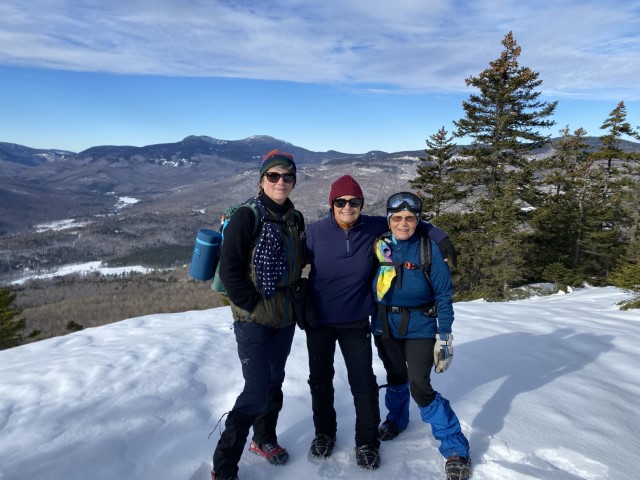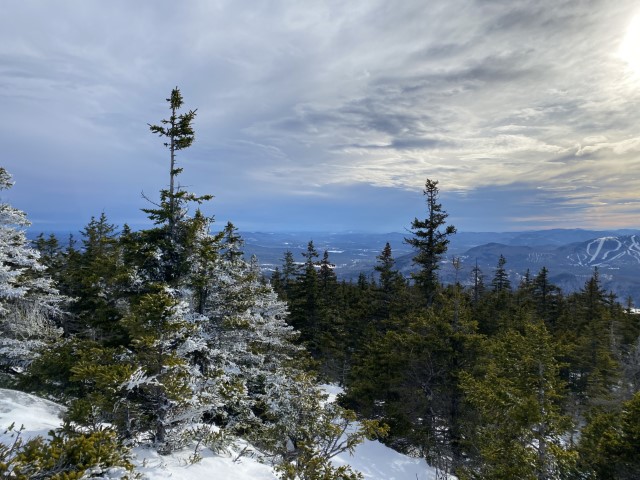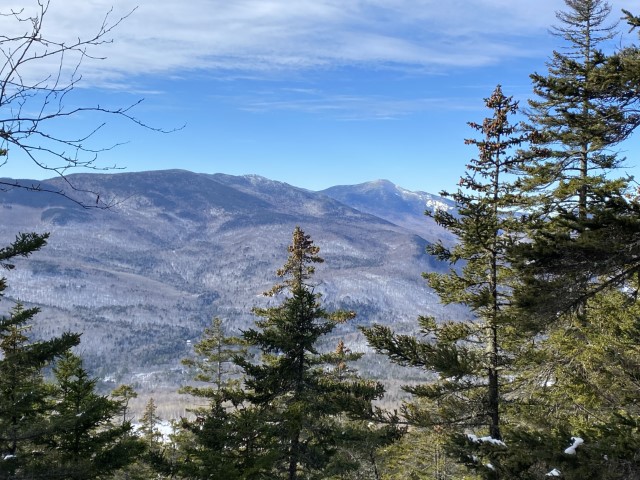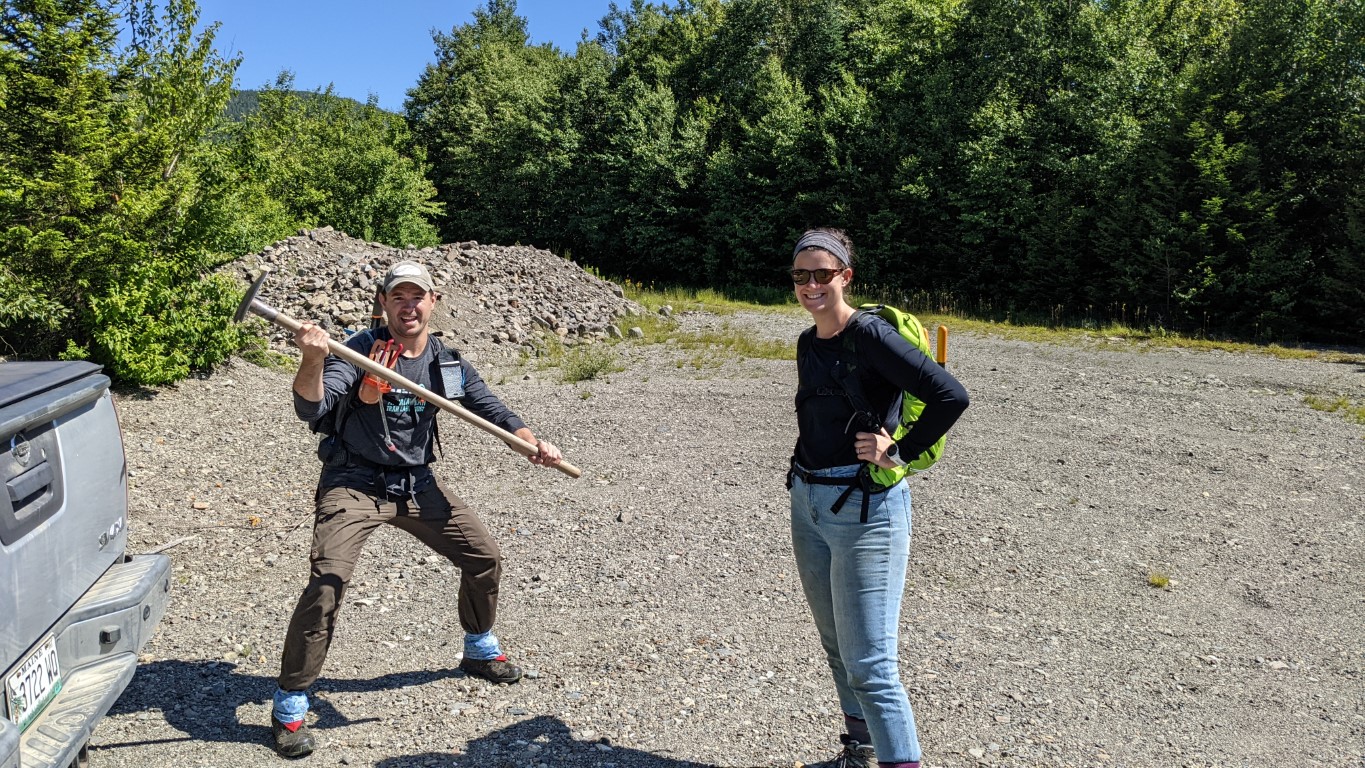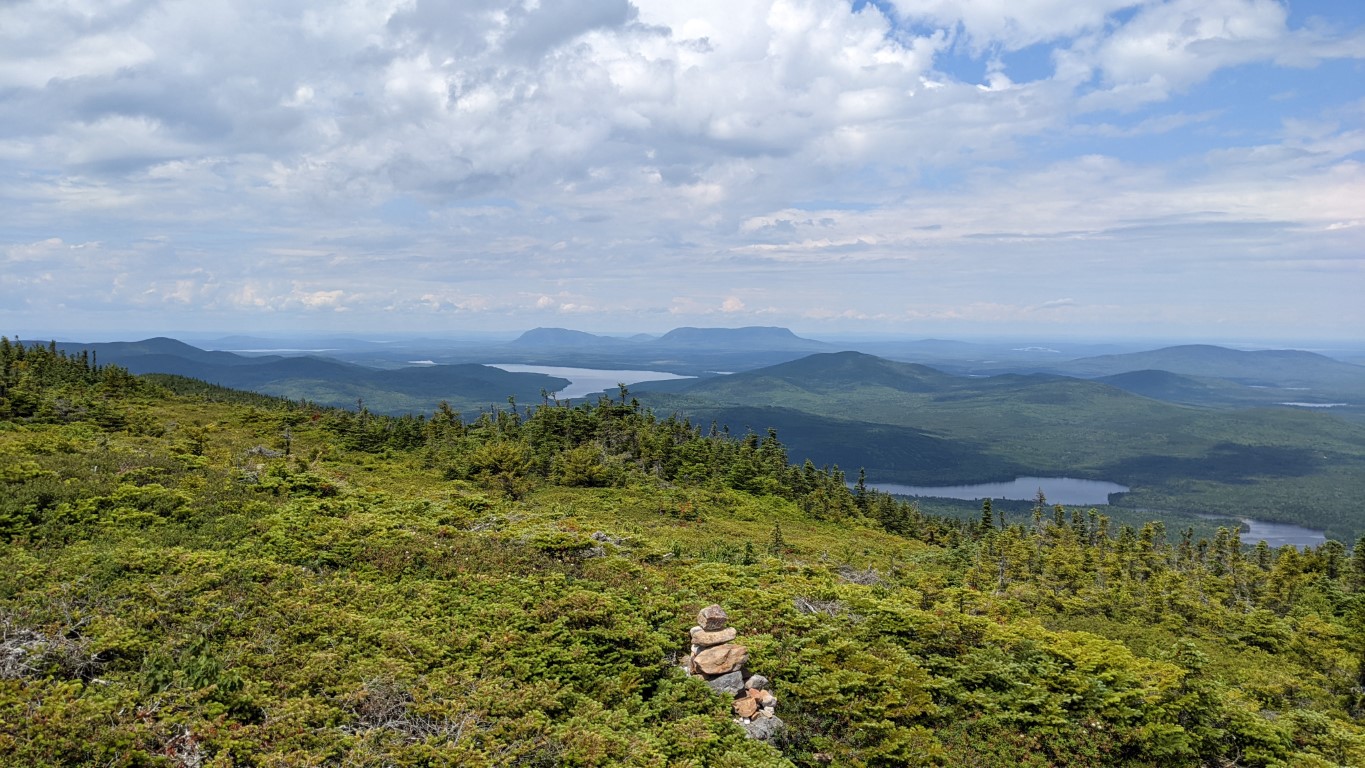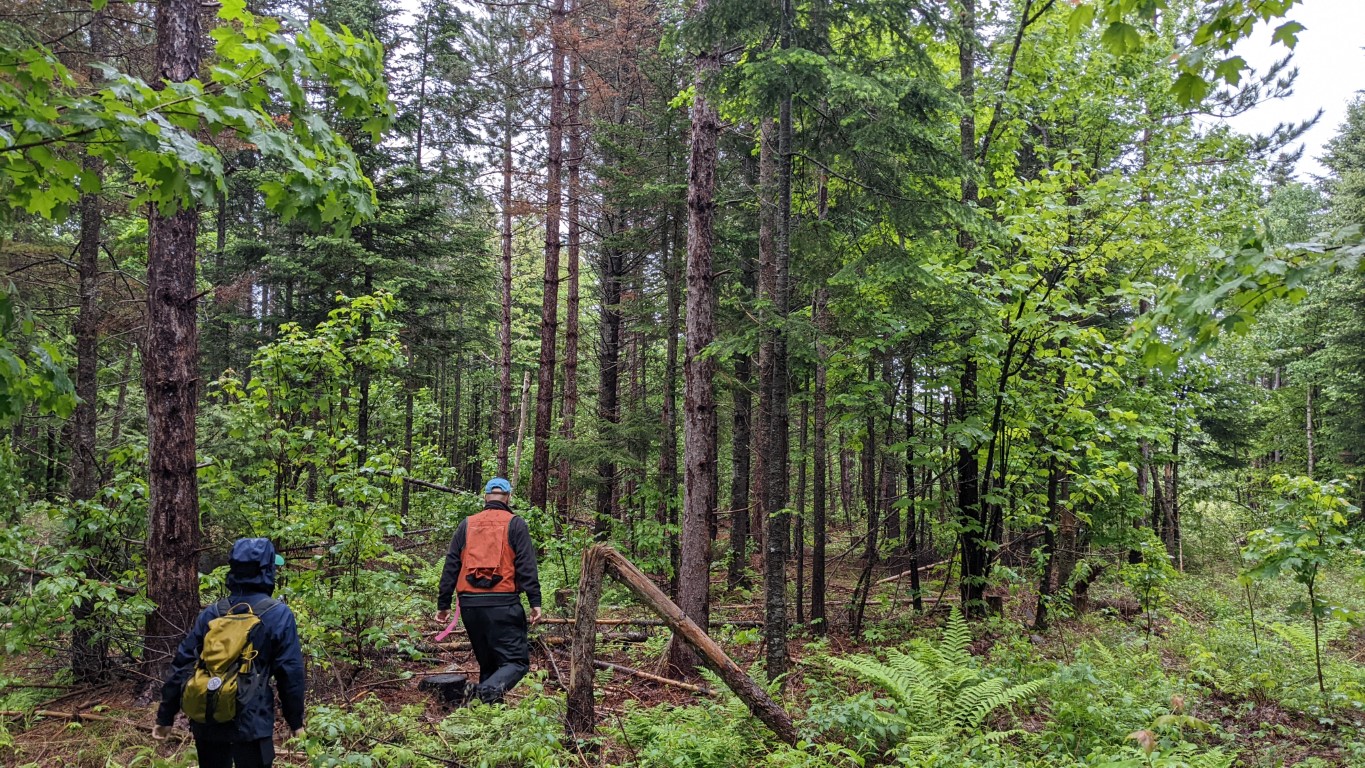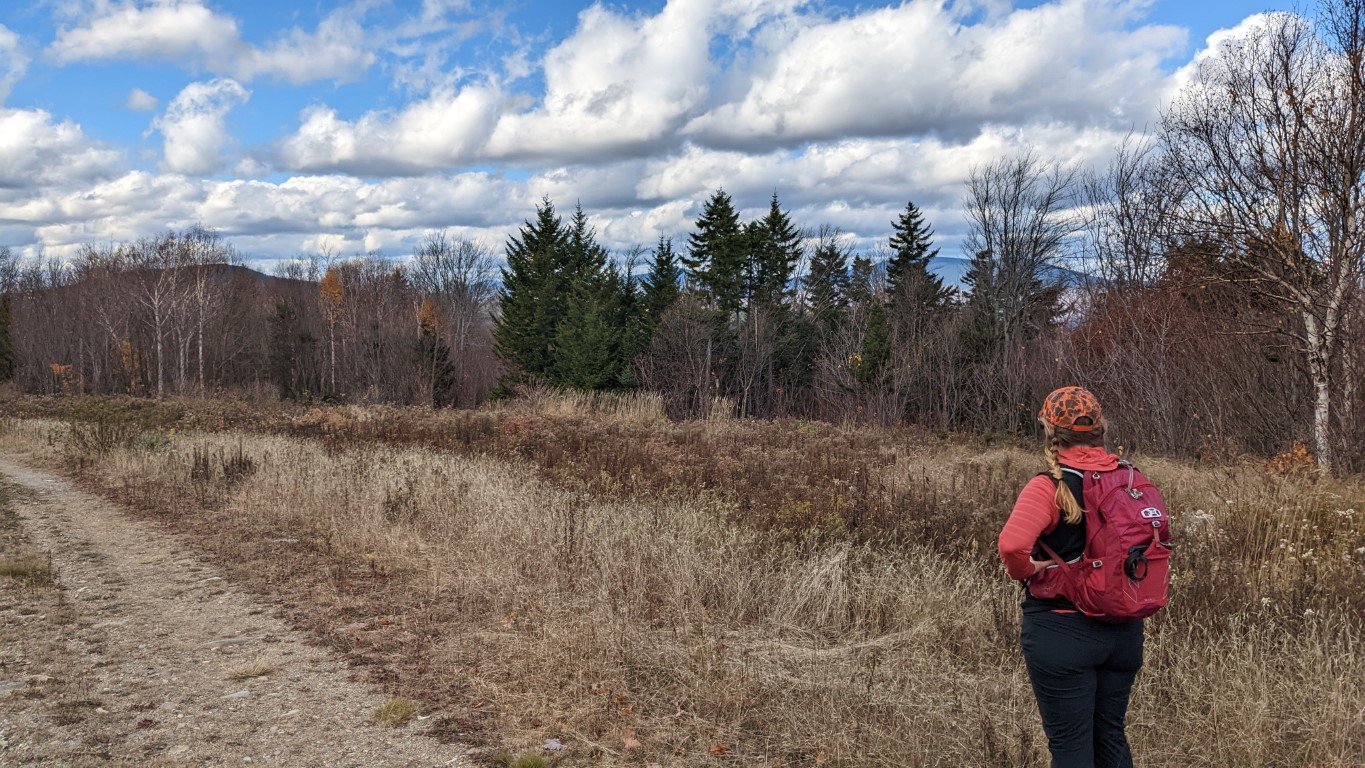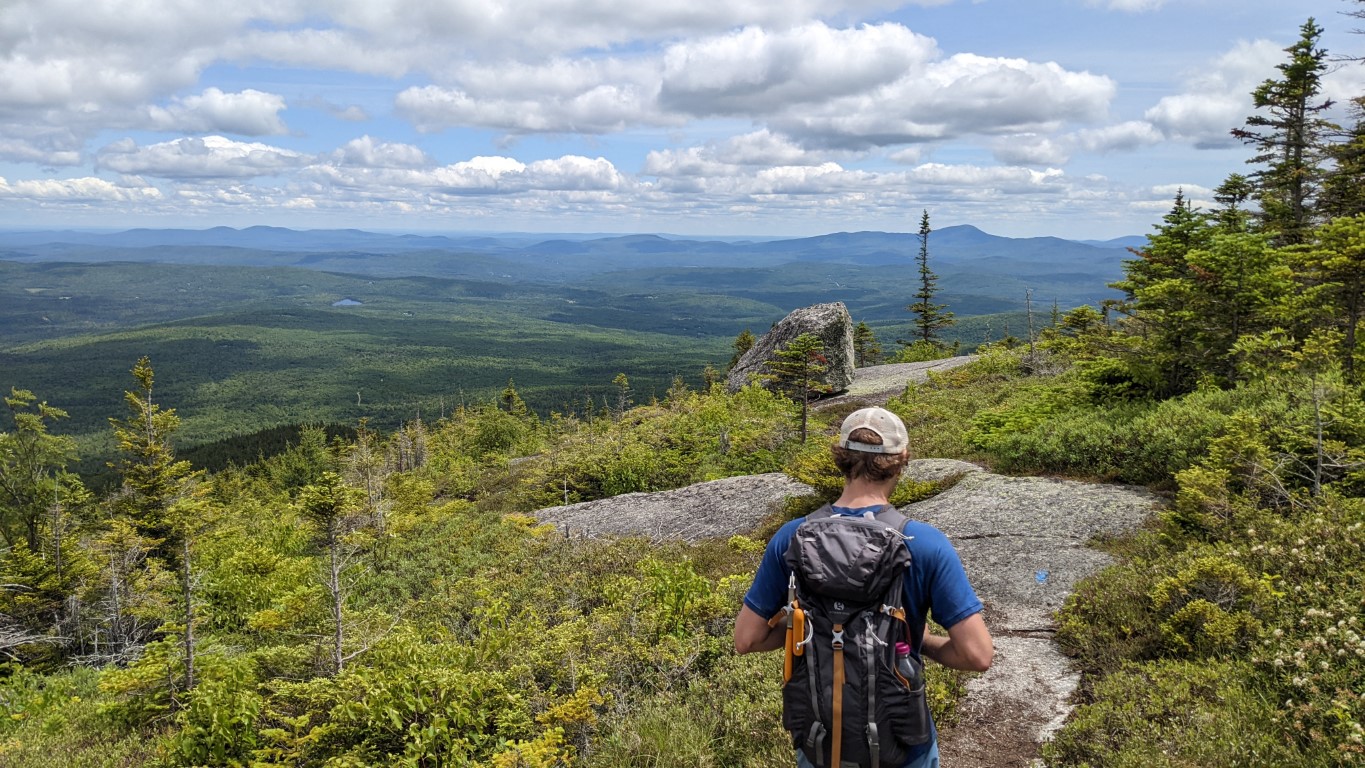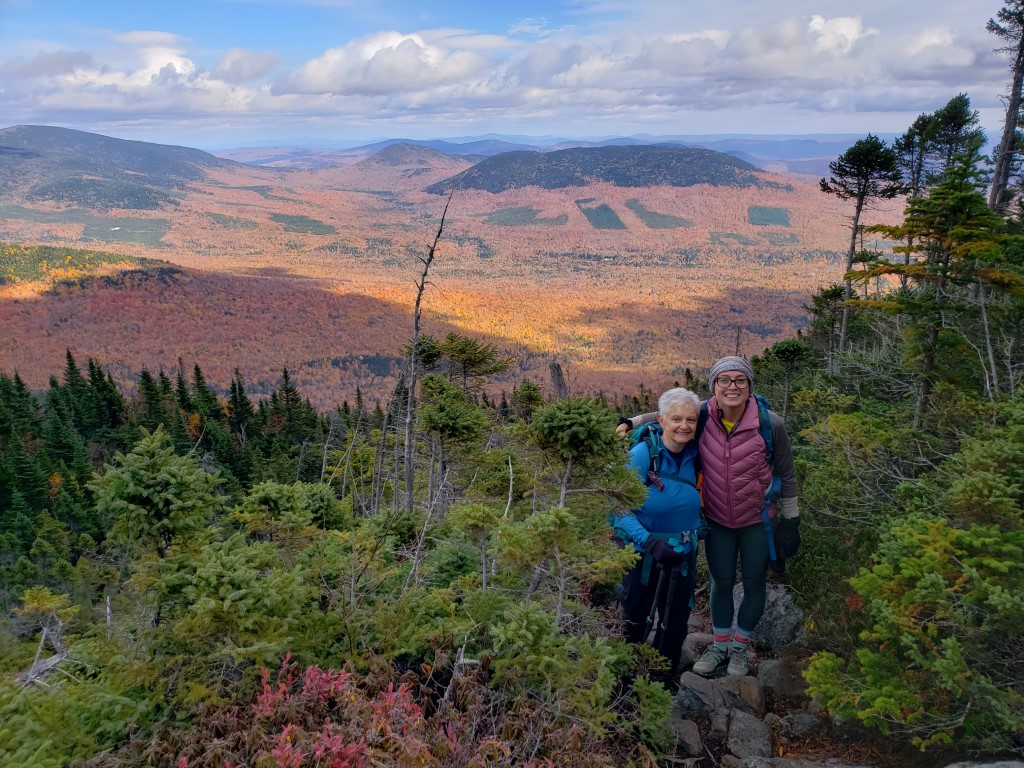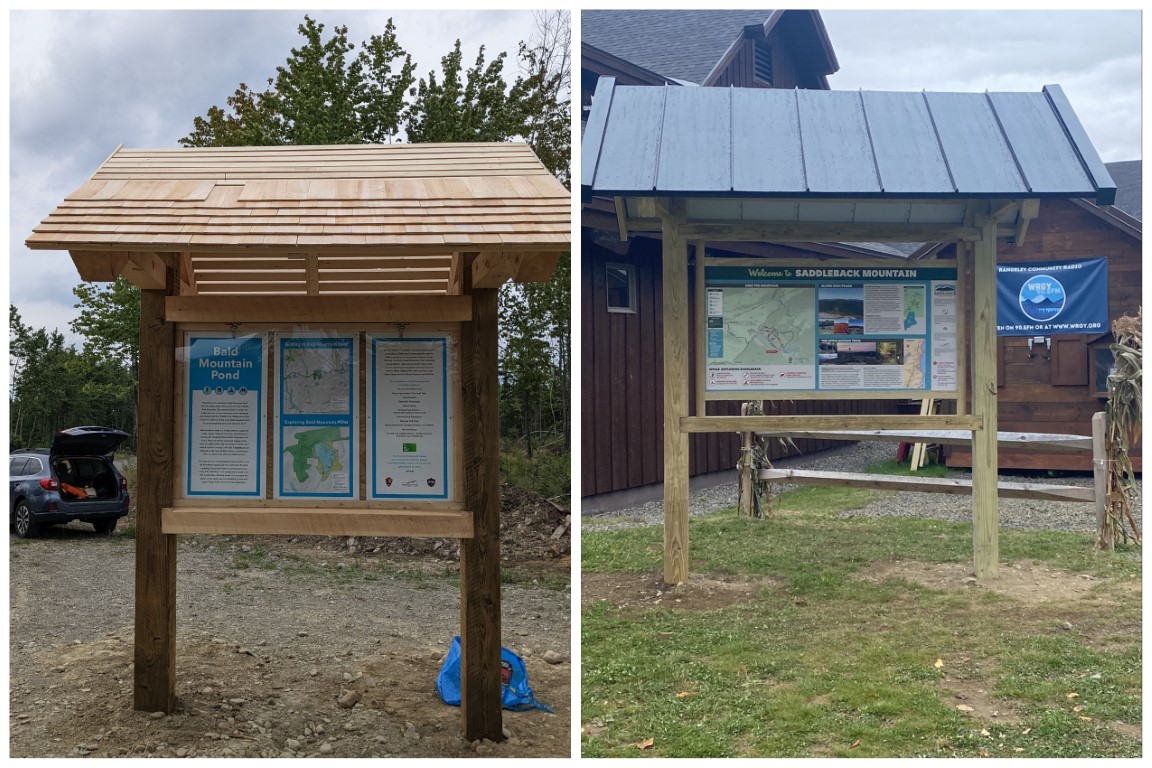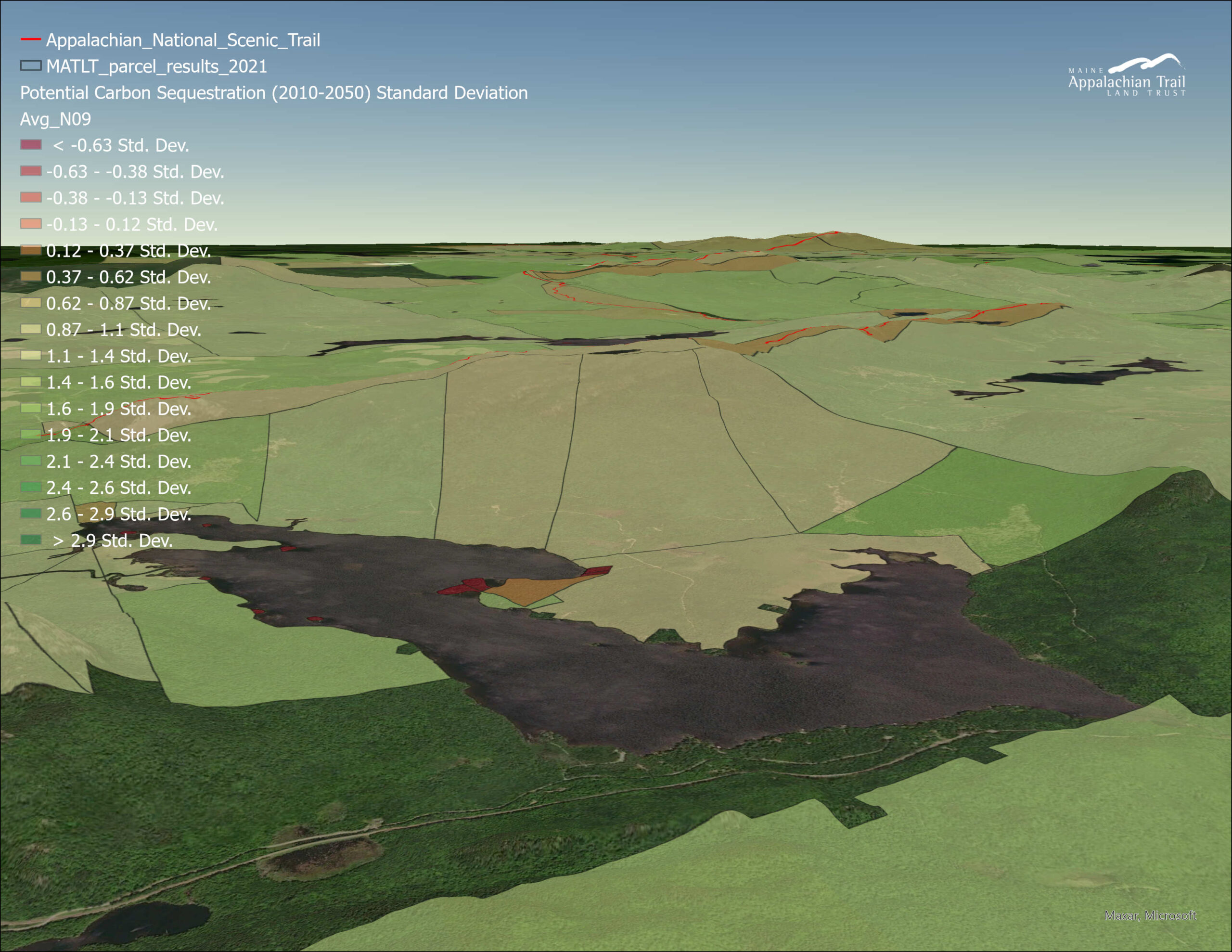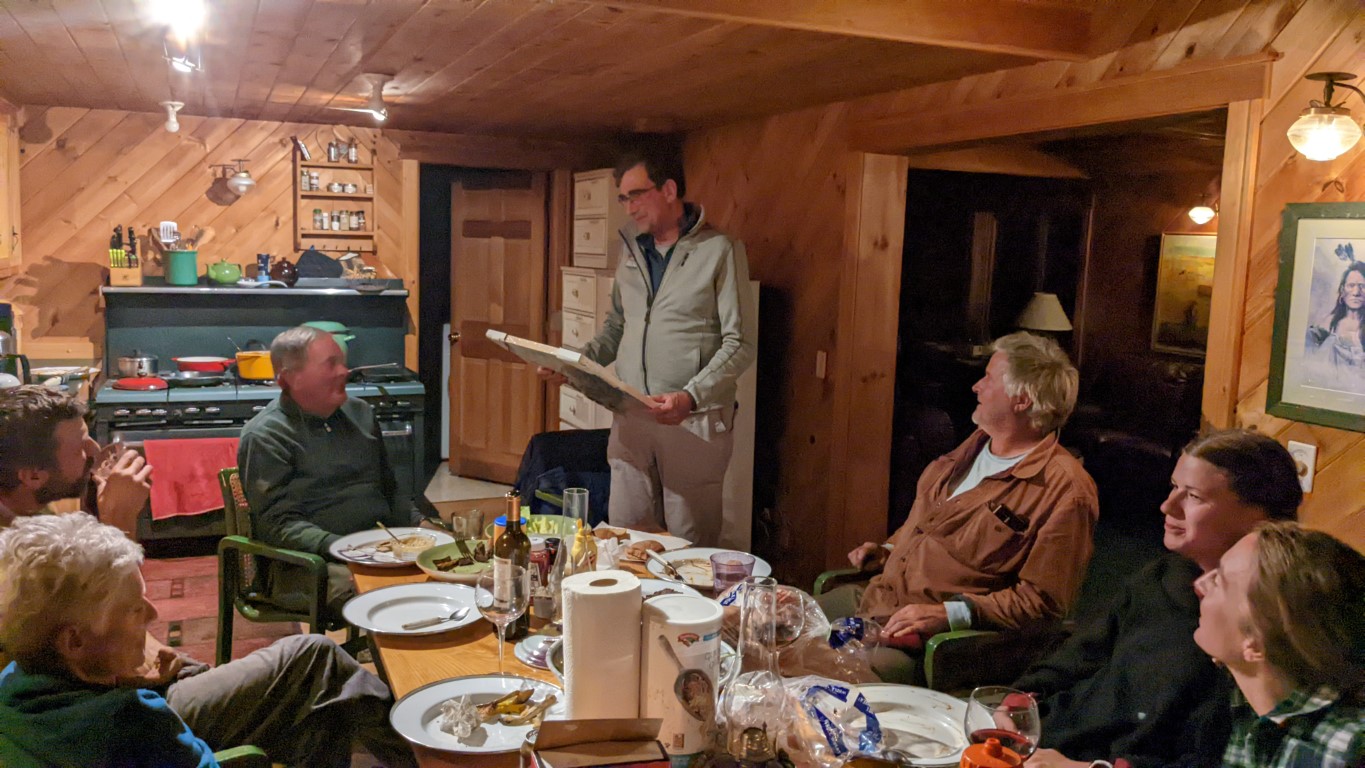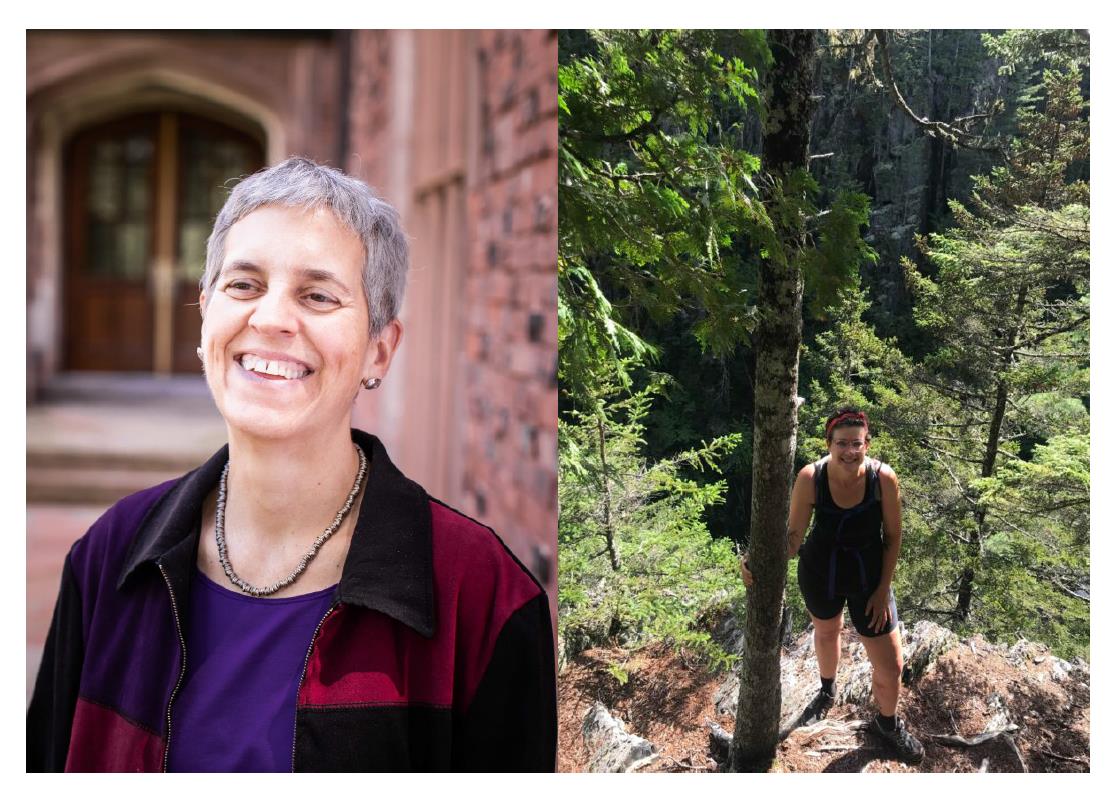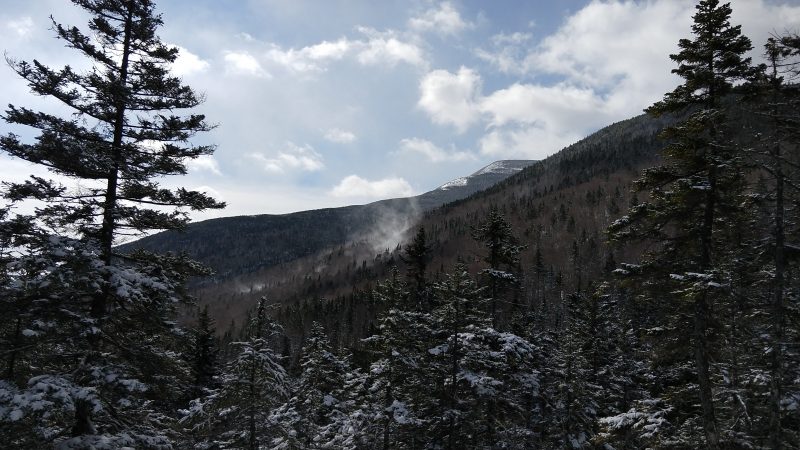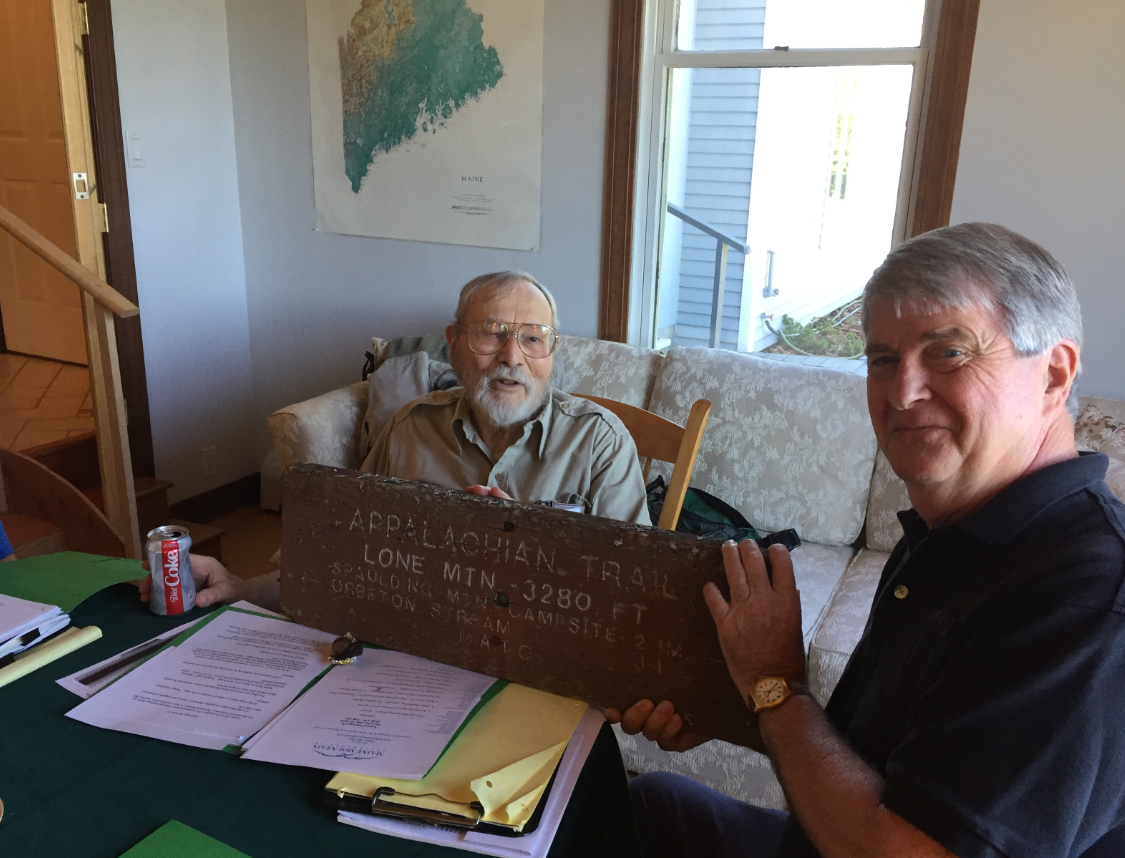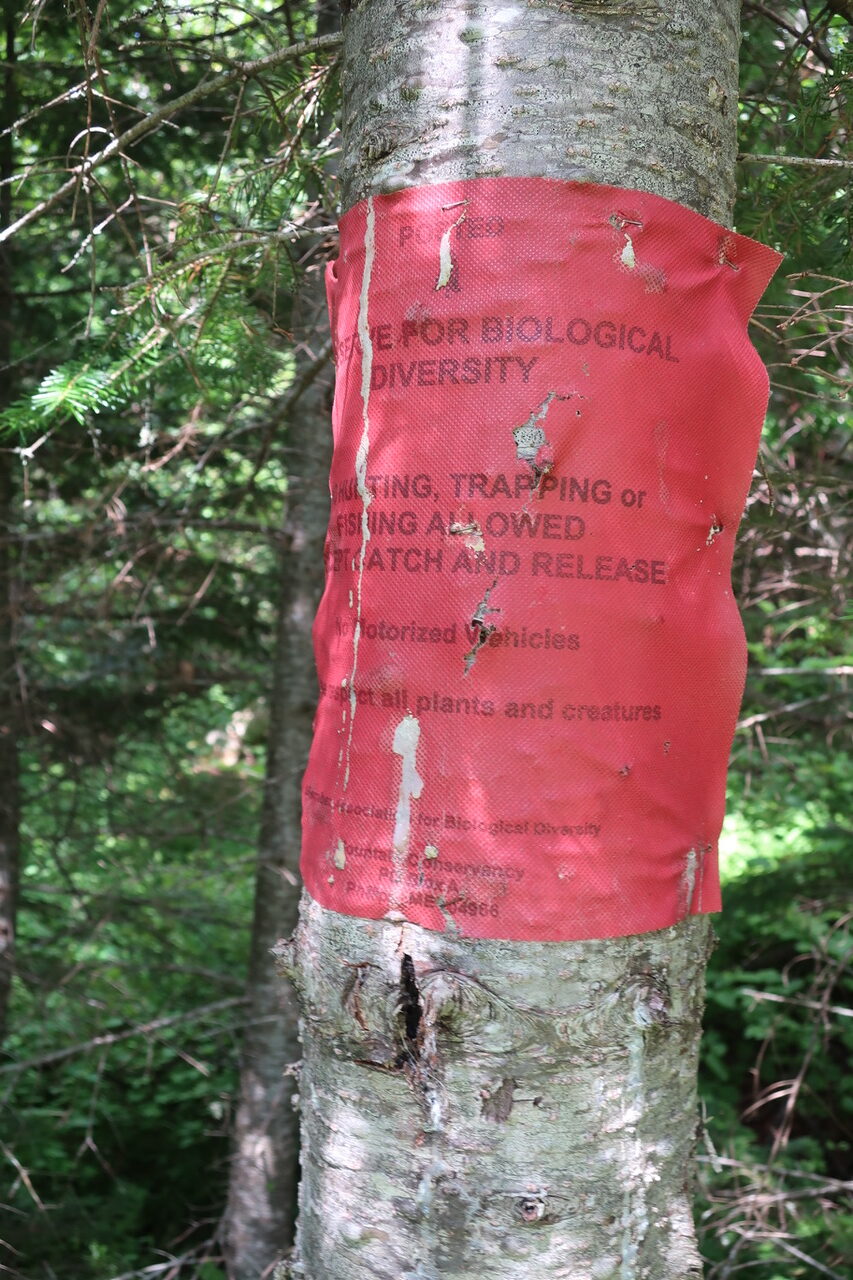MATLT’s first community hike of 2023 and of the winter season was scheduled for Saturday, January 14, but the weather a few days before and the day of was less than ideal. Fortunately, everyone agreed to postpone the hike and it was worth the wait. Sunday proved to be a sunny, almost bluebird sky kind of day, with moderate temperatures and although a bit windy, nothing to stop three happy hikers from summiting Puzzle Mountain in Grafton Notch.
Puzzle Mountain is part of the Stewart Family Preserve, named after Bob Stewart, who donated the land to the Mahoosuc Land Trust for permanent protection from development. The Puzzle Mountain Trail, part of the Grafton Loop Trail, ascends from route 26 and continues to the open summit of the mountain after passing several ledges with great views of the Bear River Valley, the Mahoosuc Range and the Presidential Range. About 0.1 miles before the summit, there is a sign for the Woodsum Spur trail that branches toff o the right. As expected, the spur was not broken out so was not on our itinerary.
The views from the ledges and the summit were beautiful as promised, but the ascent was slow. Although, micro-spikes were adequate, there was a light covering of crunchy snow that kept us marching along at a slow to moderate pace. Once at the top, and after some obligatory pictures, we sat behind the summit cairn to get out of the wind and enjoyed our lunches. A few other hikers summited while we ate but did not hang around for long. One very friendly hiker did stick around just long enough to take our group picture for which we were grateful. Of course, we returned the favor.
We did not leave the summit until after 2 PM as our ascend was not exactly timely but the trail on the way back was now packed down from our tracks and those of the other hikers. This made for a quick decent and we were down in just over two hours. As we headed down over the ledges, we were treated to the same lovely views but with that late winter afternoon sunlight that is easily more beautiful than any other time of year.
The sun was starting to set as we pulled out of the parking lot, and we were treated to a beautiful sunset. The perfect ending to just about a perfect hiking day.

